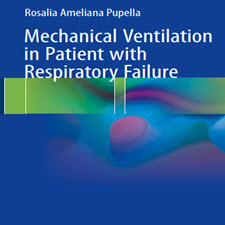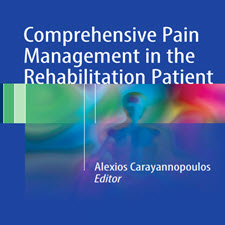Organizing Patient Safety
ABSTRACT
Concern for the safety of patients has always been part of the practice and organization of medicine. Te obligation of doctors to consider the risk of intervention and the safety of patients was present in the Hippocratic corpus of writings and has been an integral part of teaching medicine and regulating medical misconduct since antiquity. Today, the well-known axiom ‘above all, do no harm’ (in Latin primum non nocere) is, in spite of its contested origin, understood as a cornerstone in medical codes of conduct. Tis ethical norm of non-malefcence is taught in medical schools throughout the world not so much as a rigid rule or a fundamental principle, but as a symbol of sound clinical judgement (Brewin 1994) and as a reminder that all clinical activity carries the potential for harm (Smith 2005). In this way, the norm of non-malefcence is integral to the ethical formation of medical students, where learning to become a doctor involves the ability to practise medicine in the face of fallibility and uncertainty. It involves the inculcation of the fact that as a clinician your decisions and actions might cause harm, disability and death for the patients, regardless of your good intentions (Fox 1957; Paget 1988). From an organizational and societal perspective, managing medical error and misconduct function as a way to establish the line between acceptable and unacceptable medical practice and ofce-holding.
INTRODUCTION
Internal collegial procedures for detecting, classifying, disciplining or forgiving error have historically been a necessary part of professionally driven processes of social control and of teaching young doctors the standards of medical practice (Bosk 2003 [1979]). Parallel to these internal mechanisms, external and public measures such as depriving doctors their licence to practise medicine and—increasingly since the 1970s— malpractice claims and liability suits operate as legal mechanisms for regulating cases of medical negligence or unftness caused by, for instance, physical and mental disability. In the last two decades, a new version of patient safety—the international patient safety policy programme—has emerged with propositions, objectives and consequences that differ fundamentally from the traditional approaches to medical error and error management. In patient safety thinking and practice as it has developed since the early 1990s, patient safety has become a policy problem linked to wider discussions of service delivery in healthcare and to parallel and overlapping healthcare policy agendas such as evidence-based medicine, quality improvement and New Public Management–inspired ideals of public sector management based on principles of accountability, measurability and risk management.
چکیده
نگرانی در مورد ایمنی بیماران همیشه بخشی از عمل و سازماندهی پزشکی است. تعهد پزشکان به در نظر گرفتن خطر مداخله و ایمنی بیماران در بخش های نوشته شده در هیپوکرات وجود داشت و بخش عاملی از آموزش پزشکی و تنظیم رفتارهای سوء رفتار پزشکی از زمان قدیم بوده است. امروزه، علم شناخته شده “بالاتر از همه، هیچ آسیبی” (در primum non nocere لاتین) است، به رغم منشاء متضاد آن، به عنوان یک سنگ بنای در کدهای پزشکی رفتار شناخته شده است. هنجار اخلاقی تعهدات غیر شفاهی در مدارس پزشکی در سراسر جهان نه به عنوان یک قاعده سخت و یا یک اصل اساسی، بلکه به عنوان نماد قضاوت بالینی صحیح (Brewin 1994) و به عنوان یادآوری که تمام فعالیت های بالینی دارای پتانسیل برای آسیب (اسمیت 2005). به این ترتیب، هنجار عدم تعهد، جدایی ناپذیری از شکل گیری اخلاقی دانشجویان پزشکی است، در حالیکه یادگیری برای تبدیل شدن به یک پزشک شامل توانایی پزشکی در مواجهه با فساد و عدم اطمینان می شود. این شامل تحقق این واقعیت است که شما به عنوان یک متخصص بالینی تصمیمات و اقدامات خود را بدون در نظر گرفتن اهداف خوب خود ممکن است باعث آسیب، ناتوانی و مرگ می شود (Fox 1957؛ Paget 1988). از یک دیدگاه سازمانی و اجتماعی، مدیریت خطای پزشکی و عملکرد سوء رفتار به عنوان راهی برای ایجاد خط بین عمل پزشكی قابل قبول و غیرقابل قبول و كنترل جسمی.
مقدمه
رویه های کالج داخلی برای تشخیص، طبقه بندی، تدبیر و یا فراموش کردن خطا از لحاظ تاریخی بخشی ضروری از فرایندهای مدیریت حرفه ای کنترل اجتماعی و آموزش پزشکان جوان استانداردهای عمل پزشکی بوده است (بسك 2003 [1979]). به موازات این مکانیسم های داخلی، اقدامات خارجی و عمومی مانند محروم کردن پزشکان از مجوز آنها برای تمرین پزشکی و به طور فزاینده ای از دهه 1970 – ادعاهای متخلف و مسئولیت پذیری به عنوان مکانیسم قانونی برای تنظیم موارد غفلت یا بی عدالتی پزشکی، به شمول، و ناتوانی ذهنی. در دو دهه گذشته، یک نسخه جدید از ایمنی بیمار – برنامه سیاست امنیتی ایمنی بین المللی – با گزاره ها، اهداف و عواقب ناشی از رویکردهای سنتی به خطاهای پزشکی و مدیریت خطاها روبرو شده است. در تفکر و عملکردهای ایمنی بیمار که از اوایل دهه 1990 توسعه یافته است، ایمنی بیمار به یک مشکل سیاسی مرتبط با بحث های گسترده تر در زمینه ارائه خدمات در مراقبت های بهداشتی و به موازات و همپوشانی برنامه های مراقبت های بهداشتی مانند پزشکی مبتنی بر شواهد، بهبود کیفیت و جدید ایده های الهام بخش مدیریت عمومی از مدیریت بخش عمومی بر اساس اصول پاسخگویی، اندازه گیری و مدیریت ریسک.
Year: 2016
Publisher: SPRINGER
By : Kirstine Zinck Pedersen
File Information: English Language/ 293 Page / size: 1.47 MB
سال : 1395
ناشر : SPRINGER
کاری از : Kirstine Zinck Pedersen
اطلاعات فایل : زبان انگلیسی / 293 صفحه / حجم : MB 1.47

![Organizing.Patient.Safety.Failsafe.Fantasies.[taliem.ir]](https://taliem.ir/wp-content/uploads/Organizing.Patient.Safety.Failsafe.Fantasies.taliem.ir_.jpg)
![ECMO.in.the.Adult.Patient.[taliem.ir] ECMO.in.the.Adult.Patient.[taliem.ir]](https://taliem.ir/wp-content/uploads/ECMO.in_.the_.Adult_.Patient.taliem.ir_.jpg)
![Reconstructing.the.War.Injured.Patient.[taliem.ir] Reconstructing.the.War.Injured.Patient.[taliem.ir]](https://taliem.ir/wp-content/uploads/Reconstructing.the_.War_.Injured.Patient.taliem.ir_.jpg)
![Bone Toxicology[taliem.ir] Bone Toxicology[taliem.ir]](https://taliem.ir/wp-content/uploads/Bone-Toxicologytaliem.ir_.jpg)

![Environmental, Health, and Safety Guidelines for[taliem.ir] Environmental, Health, and Safety Guidelines for[taliem.ir]](https://taliem.ir/wp-content/uploads/Environmental-Health-and-Safety-Guidelines-fortaliem.ir_.jpg)


![Introduction.to.Drug.Disposition.[taliem.ir]](https://taliem.ir/wp-content/uploads/Introduction.to_.Drug_.Disposition.taliem.ir_-150x150.jpg)
![Radiation.Therapy.for.Liver.Tumors.[taliem.ir]](https://taliem.ir/wp-content/uploads/Radiation.Therapy.for_.Liver_.Tumors.taliem.ir_-150x150.jpg)
دیدگاه خود را ثبت کنید
تمایل دارید در گفتگو شرکت کنید؟نظری بدهید!